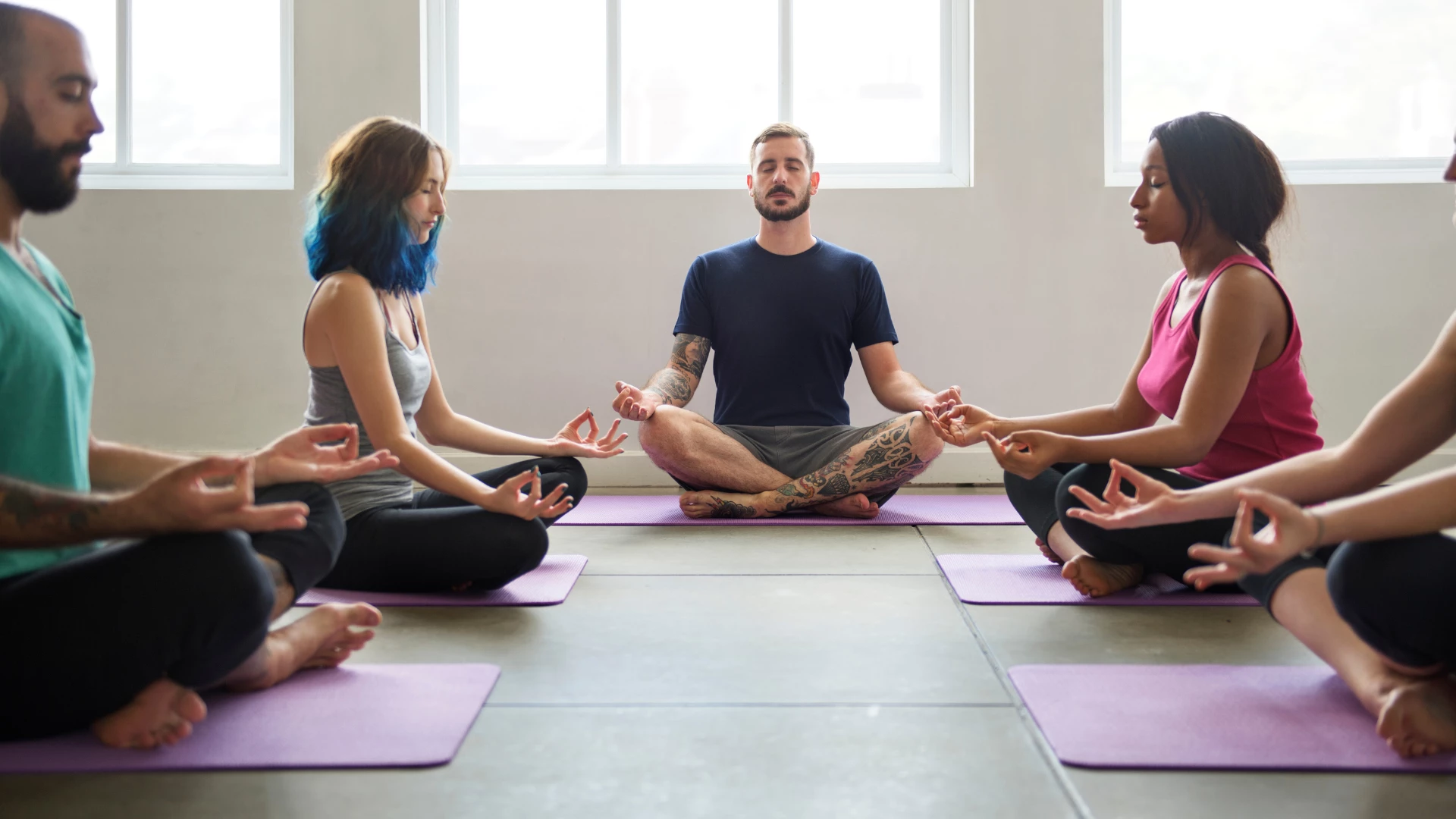8 Dos and Don’ts When Teaching Yoga to Beginners

Article At A Glance
Starting a new yoga class as a beginner can be pretty intimidating. When brand new yoga practitioners enter your class, of course, you want to make them feel welcome, seen, and appreciated. But you have quite a bit on the agenda of what you need to get across to them in a short period of time. So there are a few dos and don’ts that can be helpful to keep in mind when teaching yoga to beginners.
When it comes to teaching yoga to beginners, there are a few dos and don’ts that can help your students feel welcome and feel like they belong.
If you remember your first yoga class, it was a pretty intimidating experience. Stepping outside of your comfort zone and trying any new activity can be nerve-wracking. Trying to learn a new way to move your body, a literal foreign language, a new philosophical way of being, a new way of breathing, and a pretty intense and ancient spiritual philosophy is a lot to take on when you first start practicing yoga.
When brand new yoga practitioners enter your class, you want to make them feel welcome, seen, and appreciated. But you have quite a bit on the agenda of what you need to get across to them quickly. There are a few things that can be helpful to keep in mind.
Teaching Yoga to Beginners
Of course, every class is different, and every group of beginners is different. But here is a rough outline of some important things to remember when teaching yoga to beginners.
4 Dos for Teaching Yoga to Beginners
-
Do Offer Lots of Options

Beginner students often need many options in various poses to accommodate various levels of mobility, strength, endurance, and flexibility.
So, when teaching yoga to beginners, be sure to offer plenty of options in just about every pose so that, no matter what, your students have a place to work.
-
Do Be Mindful of Your Language

The most empowering way to teach yoga to beginners is to offer many options in just about every pose. But the trick is to do this with empowering language.
So if you’re offering the option to bend the knees in a forward fold, for example (which is a great option for beginners!), then instead of saying something like, “If this is too hard, you can bend your knees” or “If your hamstrings are tight, bend your knees” swap out that language to say, “Option to bend your knees.”
This way, it doesn’t imply that one way is better than the other or that one version is a “better” version of the pose or the “correct” way to do it. It’s just another version. Nothing more, nothing less.
This simple language shift will empower beginner students to practice in a way that works for them rather than being belittled because they’re “not good” at yoga.
-
Do Demo Poses Often

A lot of people are visual learners, particularly when it comes to physical activity. In order to better understand your cues to come into Triangle Pose (Trikonasana), for example, most beginners will need some visual cues to follow.
So, in beginner’s classes, it’s usually really helpful for most to have the teacher demonstrate a lot (if not all) of the practice. This way, if they don’t quite know what you mean by the phrase “square the hips” or “soften the shoulders,” they might be able to see it visually in your own body and mimic it in theirs.
-
Do Introduce Meditation, Breathwork, and Philosophy

While introducing asana to beginners can be a lot, it’s important not to neglect the more subtle aspects of yoga practice when teaching it to beginners.
Meditation, breathwork, and yogic philosophy can certainly be addressed, introduced, and practiced even in a beginner’s yoga class.
Start with simple practices like just sitting and following the breath before moving on to more particular pranayama and meditation practices. Perhaps start with mindful awareness to introduce a tenet of yogic philosophy or a short anecdote about one of the eight limbs of Patanjali’s Ashtanga Yoga.
Whatever appeals to you in your own practice can absolutely be introduced to beginners. The yoga practice is rich and deep, and there’s no reason beginners should be excluded from its more subtle practices.
4 Don’ts for Teaching Yoga to Beginners
-
Don’t Overcorrect New Students

Beginners often feel like they need to be more organized and coordinated. They often feel like they’re doing everything “wrong” or “making a fool of themselves.” So be mindful of this when you adjust or assist your beginner students.
Of course, they won’t always get the alignment just right, and they might not fully comprehend your awesome cues yet, but give them the time and space to find their footing and unique practice style on their own.
If you constantly “correct” them, they think they’re “bad” and will likely not return.
-
Don’t Single Anyone Out
Again, beginners are often self-conscious when they first start out. So don’t single them out or make a “teaching moment” out of them.
Give them the confidence to continue on their path through your empowering cues, offering (and demoing) options, and quiet cheerleading.
-
Don’t Be Dogmatic

Yoga is a vast, rich, and deep practice. It has countless lineages and schools of thought, philosophy, and physical practice. One way is not better than another. One style does not lead you to enlightenment faster.
So be mindful that a beginner is typically just wetting their feet into the vast world of yoga. Try to introduce them to as much as possible without forcing one school of thought onto them. Let them explore the many different facets of yoga without thinking that one way is the way and the other ways are inferior.
-
Don’t “Call” Poses

When teaching yoga to beginners, you really need to teach. You can’t simply call out Side Angle Pose (Parsvakonasana)(shown above) or Mountain Pose (Tadasana) or any pose and expect your students to have any idea what that means or how to do it.
You really need to finesse your language and cues when offering classes to beginners so that they can learn what these poses are and how to practice them effectively.
The Takeaway on Teaching Yoga to Beginners
Teaching anything is hard. Teaching beginners is even harder. But a truly good yoga teacher can break down the many aspects of yoga into the most simplistic of words to make it accessible and welcoming to anyone at all.
When teaching beginners, above all else, have patience, poise, and kindness; you cannot go wrong.
Also, read...
7 Yoga Poses for Beginners
Getting Started: A Guide to Beginning Yoga Practice
Balancing Yoga Pose Basics
Related courses
Journey to Center: A Yoga Guide to Unlock the Full Potential of Your Core
Yoga for Healthy Hips: Principles for a Safe Practice
Need an Energy Makeover? How Yoga Can Help You Boost Vitality

Leah Sugerman is a yoga teacher, writer, and passionate world traveler. An eternally grateful student, she has trained in countless schools and traditions of the practice. She teaches a fusion of the styles she has studied with a strong emphasis on breath, alignment, and anatomical integrity. Leah teaches workshops, retreats, and trainings, both internationally and online. For more information, visit www.leahsugerman.com.






